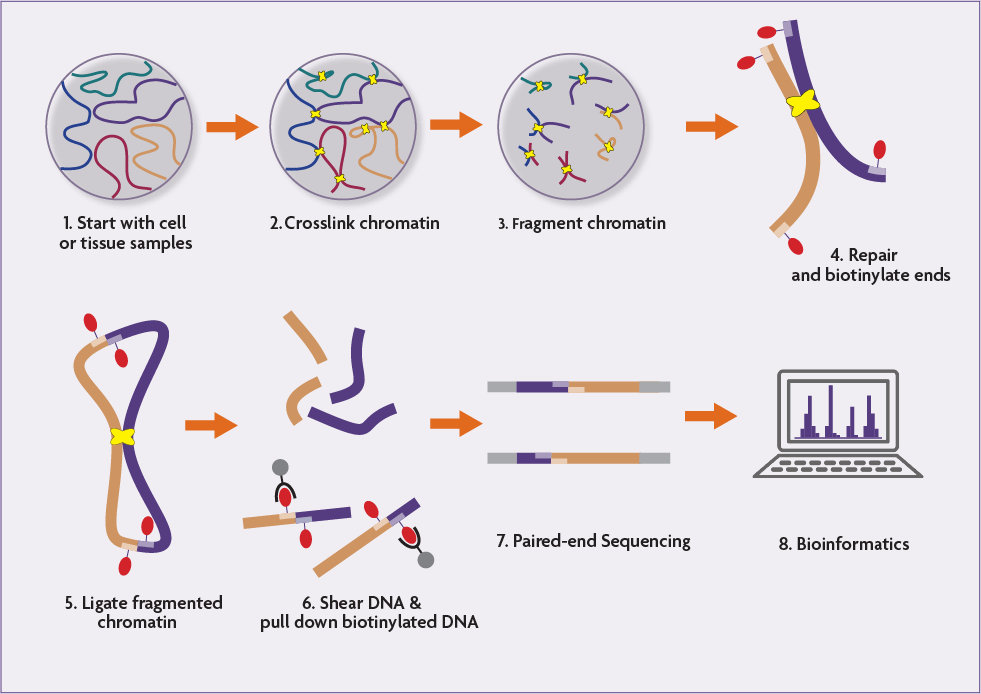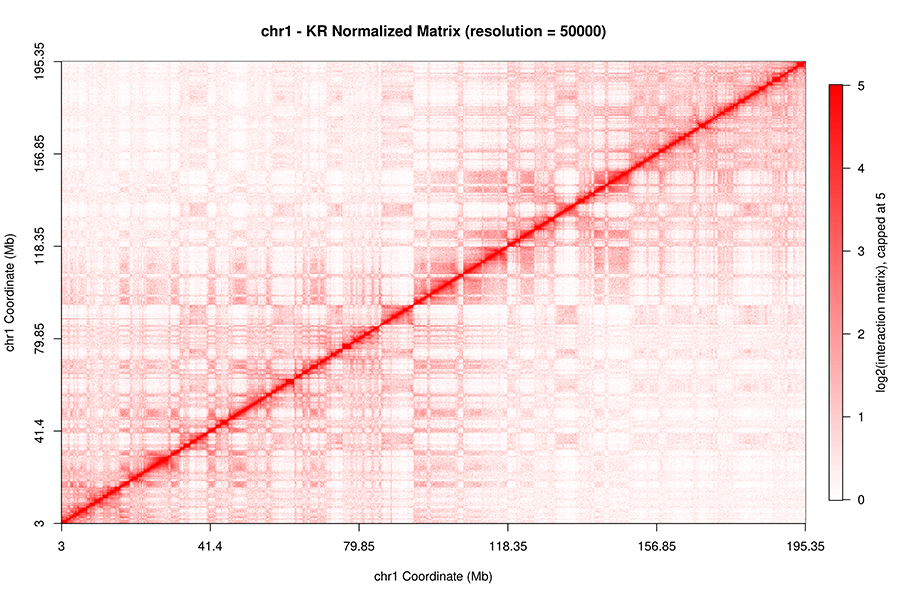Hi-C Service Overview
Save 30% Now on Hi-C Services. Learn More
Interactions within the nucleus are complex as chromatin is highly compacted and structured. This highly ordered structure allows for genomic regions that are separated by thousands of kilobases to come together and impact gene expression.
Our Hi-C service enables investigators to map all interactions between distant loci in the genome providing a 3-D view of genome organization.
Learn more about Hi-C and how it works
What are the advantages of using Hi-C?
Hi-C can be used to map all interactions between distant loci in the context of chromatin organization. This allows investigators to gain new mechanistic insights into their experimental system.
For example, Hi-C allows researchers to:
- Identify changes in chromatin organization in response to treatment or stimuli
- Identify novel chromatin organization that correspond to different stages of development or disease progression
What is Included with Active Motif’s End-to-End Hi-C Service?
- Submit cell or tissue samples
- Chromatin is crosslinked
- Chromatin is fragmented with restriction enzymes
- Fill chromatin ends and label with biotin
- Ligate biotinylated ends
- Purify and shear DNA followed by biotin pull down
- Library preparation and sequencing
- Bioinformatic analysis
Hi-C Service Data
Figure 1: Observe high level chromosome interactions by using Hi-C.
Hi-C contact maps of mouse uterine tissue reveal interactions among chromosome 1. Dark red boxes plotted diagonally are the interaction values. A point directly on the diagonal shows the score for how proximal a region is to itself.
Figure 2. Hi-C enables identification of complex chromatin interactions like chromatin looping and Topological Associating Domains (TADs).
Hi-C was performed using mouse uterine tissue. Snapshot of WashU Epigenome Browser looking at a 6.8 Mb region of chromosome 6. Topologically Associating Domains (TADs) are represented as purple bars. Chromatin loops are indicated by brown arcs.
Figure 3. ChIP-Seq analysis of CTCF confirms association of CTCF at boundaries between chromosomal topological associating domains (TADs) identified by Hi-C.
Hi-C analysis of mouse uterus identified a TAD that includes Wnt7a (purple bar). Chromatin loop is represented by the brown arc. CTCF is a known mediator of long-range chromatin looping and is known to define TAD boundaries. Using ChIP-Seq, CTCF binding was enriched (blue peaks) at the boundaries of the identified TAD (bottom).
Work with the Epigenetics Experts
Let our team of epigenetics experts help take your experiments to the next level. We have over a decade of experience offering Epigenetic Services, and hundreds of researchers trust us with their priceless samples.
We can determine whether novel transcription factors and histone modifications change in the context of chromatin conformation identified by Hi-C using our end-to-end ChIP-Seq services with the same samples that you submit for Hi-C.
We can also perform ATAC-Seq or RNA-Seq in parallel and provide you with comprehensive bioinformatics analysis so you can fully understand what the results mean.
Our services will help you publish faster and in higher impact journals.
To learn more, please submit an Epigenetic Services Information Request. You can also download Active Motif’s Epigenetic Services Brochure.
Hi-C Service FAQs
What is Hi-C?
What sample types are accepted for this service?
How many cells are required for the Hi-C service?
How much tissue is required for the Hi-C service?
Hi-C Service Documents
Hi-C Service Sample Submission Portal
Our online sample submission portal allows you to easily upload your service project samples and track your project status. Follow the sample submission instructions in the portal to ensure that all your samples arrive at Active Motif in the best possible condition and properly associated with your project.
You might also be interested in:
- View all Epigenetic Services
- ChIP-Seq Services
- Guide to Understanding and Using Hi-C
- Browse ChIP kits
- Shop ChIP-validated antibodies
Active Motif’s Hi-C service is offered in partnership with Arima Genomics.

| Name | Cat No. | Price | |
|---|---|---|---|
| Hi-C Service | 25280 | Get Quote |





